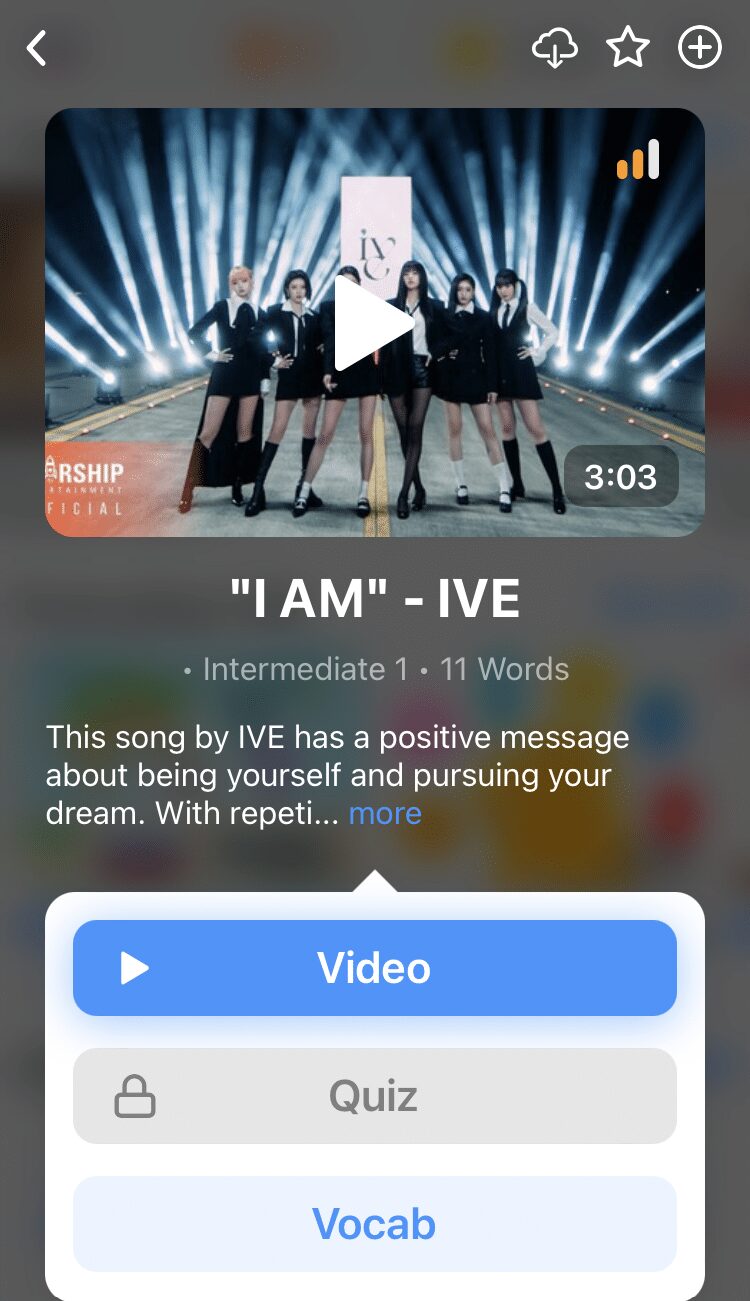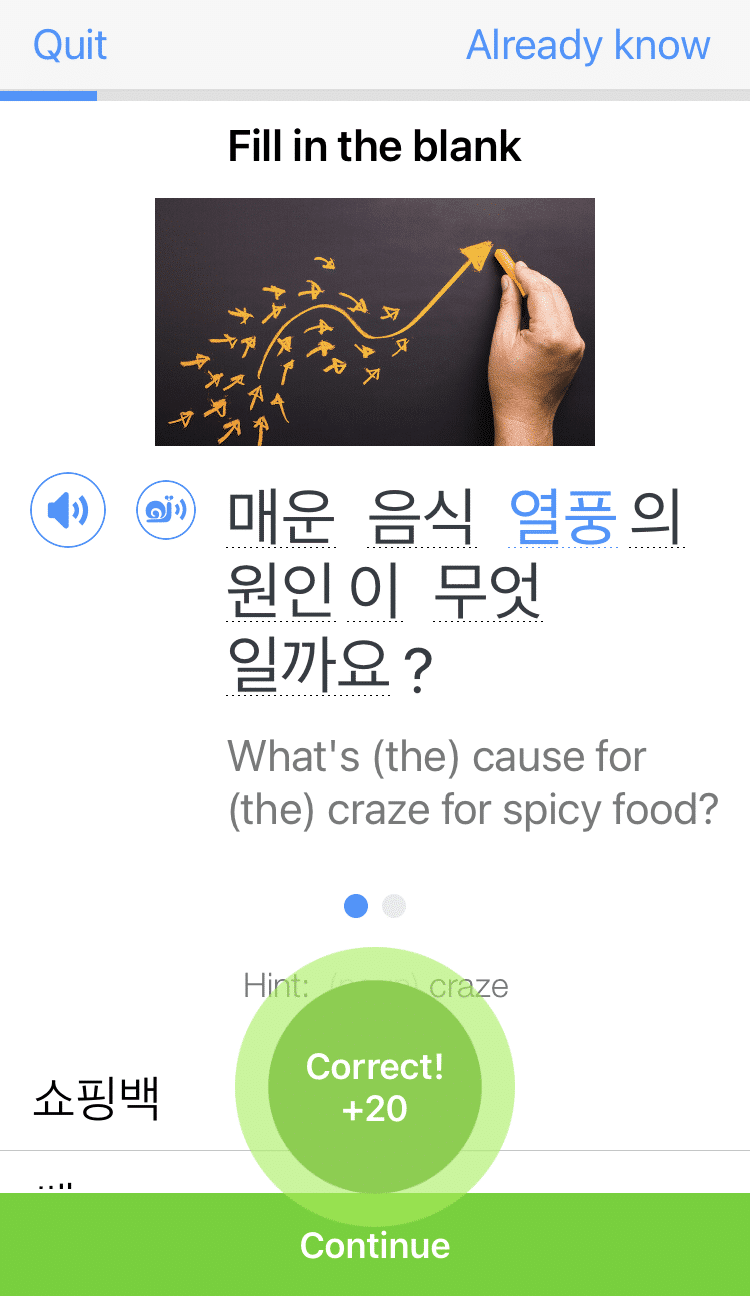The Complete Guide to Korean Grammar

Like any difficult puzzle when it’s broken down, Korean grammar can be very approachable.
Here, I’ll be touching upon all the different aspects of Korean grammar and also provide helpful detailed guides for each.
Download: This blog post is available as a convenient and portable PDF that you can take anywhere. Click here to get a copy. (Download)
How Difficult is Korean Grammar?
I won’t lie: Korean grammar is significantly different from English grammar, and so it presents a few unique challenges that will take some time to overcome.
But, once you learn the basic rules, things will stay pretty logical and consistent. Compare this to the wild inconsistencies in English grammar–if you can write English sentences, you can absolutely learn to write Korean sentences (perhaps even quicker than you’d expect).
Another thing to remember is that Korean is an agglutinative language. This means that Korean words are made up of separable parts, which are combined to form distinct concepts or ideas. On the other hand, English is a mix of agglutinative and fusional.
We’ll be going over exactly what distinguishes Korean grammar.
Korean Sentence Structure
Basic Korean sentences follow a Subject-Object-Verb order. The subject is the “doer” of an action, the verb is said action, and the object is the “recipient” of the action.
For example, if you were to write “I eat cake” in Korean, it would literally be written out as “I cake eat.” So, whenever you analyze a Korean sentence, you should expect the verb near or at the very end.
- He throws the ball – 그는 공을 던진다 (He the ball throws)
- The woman runs to the store – 여자는 가게로 달려간다 (The woman to the store runs)
Like in English, Korean sentences don’t always need an object. In these cases, sentences just follow a simple Subject-Verb order.
Some sentences don’t even involve a subject. You could have an understandable Korean phrase using just a verb, with or without adjectives or adverbs. Context will be necessary to work out the full meaning.
Korean Sentence Structure and Word Order Patterns | FluentU Korean Blog
With Korean sentence structures there are three main patterns that you need to know, with the most important being Subject-Object-Verb (SOV). Read this guide to essential…
Korean Particles
We’re not talking about things under a microscope! Korean particles are a critical grammatical component that are essential to deciphering any sentence’s meaning.
In short, a particle is an addition to a word (usually a suffix) that marks its function within a sentence. It can also suggest features of the word, such as if a noun is singular or plural or what tense is being used.
Particles, therefore, basically act as markers within a sentence that tell you what is what.
There are many Korean particles, but there are around 20 that are the most commonly used and necessary to learn.
6 Most Common Types of Korean Particles | FluentU Korean
Learn the most common Korean particles. This guide introduces 은/는 (topic particles), 이/가 (subject particles), 을/를 (object particles), 와/과/랑/이랑/하고…
Korean Nouns
A noun is a person, place or thing, whether it’s something you can physically touch or something you can only imagine. The Korean word for noun is 명사 .
Here are a few examples of what can be considered a noun:
In Korean sentences, nouns can appear in two major ways. They can just appear in their regular format “unconjugated,” or they can come bearing those all-important particles. These particles act as distinguishable subject and or object markers.
Important to note: noun plurality isn’t really a thing in Korean! In English, we can often tell if there is more of a noun by adding “s” at its end (ex. one apple to two apples). However, in Korean, there often isn’t a way to specify if a noun is singular or plural.
You could add a particle (들) to be clear that you’re talking about multiple things, but this isn’t truly necessary, as context (it really is the master here) will clear things up.
150 Core Korean Nouns Every Learner Should Know | FluentU Korean Blog
Basic Korean nouns are essential for a solid foundation in your language studies. Check out our list of 150 Korean words, which includes nouns related to people, places,…
Korean Pronouns
A pronoun is a word that can substitute for a noun. In English, pronouns are words like “I,” “you,” “he” and “they.”
Thankfully, unlike many other foreign languages (and even English), there are no gender-specific pronouns. In other words, Korean pronouns can be used by anyone of any gender, no real need to distinguish pronouns for a “she” and a “he.”
Furthermore, a Korean personal pronoun wouldn’t change whether you’re talking about a subject or object. In English, “I” and “me” are the first-person pronouns used when speaking of the subject and object, respectively. In Korean, the only difference would be in the particle.
However, pronouns are differentiated by formality. How polite you are, and who you’re talking to, affects your choice of pronouns. For example:
In truth, pronouns aren’t used nearly as often in Korean as in English. Much of casual Korean speech eliminates the subject of sentences, so context fills in the blanks to determine who is being talked about. Alternatively, full names or titles are commonly used instead of pronouns, even if you’re talking directly to whoever you’re talking about!
Korean Pronouns: The Complete Guide | FluentU Korean Blog
Korean pronouns play an important role when properly and politely addressing someone. Read this guide to learn all about Korean personal, demonstrative, interrogative and…
Korean Verbs
A verb is a word that describes an action, state or occurrence. In Korean, a verb is known as 동사 .
Korean verbs can remain in their infinitive “dictionary form” (ending in 다) or become conjugated to take on specific implications.
Conjugations
The basic rule of Korean verb conjugation is to take the stem of the verb in its infinitive form and give it a new ending.
Verb conjugations don’t differentiate by first, second or third person POVs. Most verb conjugations are regular, so you don’t have to worry too much about weird irregularities.
But you do have to consider formality, again! Depending on how formal you are, a verb may gain a different ending. For example:
- To give ( 주다 ) → 주십시오 (formal polite), 주세요 (polite), 줘 (informal)
- To thank ( 고맙다 ) → 고맙습니다 (formal polite), 고마워요 (polite), 고마워 (informal)
Verb conjugation can get a little tricky, but we do have a more in-depth guide on how to approach the basics.
How Korean Verb Conjugation Works | FluentU Korean Blog
To become a master of Korean verb conjugation, you need to start with the basics! Click here to learn how to conjugate the three main formalities and four Korean verb…
Tenses
The ending given to a verb stem also indicates the tense being used. Tense is a method of expressing time using verbs.
There are luckily only three tenses in Korean: past, present and future. Compare this to English’s whopping 12!
- Past tense – describes things that happened/existed at a previous point in time
- Present tense – describes things that are currently happening
- Future tense – describes things that will or are expected to happen later on
The progressive and perfect tenses too can be implied using the tenses above. Context again will be key to figuring out the exact meaning.
This means that overall, there are less conjugation rules to remember.
How Korean Verb Conjugation Works | FluentU Korean Blog
To become a master of Korean verb conjugation, you need to start with the basics! Click here to learn how to conjugate the three main formalities and four Korean verb…
Negatives
Negating a sentence means to suggest its meaning is false or incorrect. A common way we do so in English is by using words like “no” and “not.”
Negating sentences in Korean is a bit more nuanced. There are a variety of negation expressions that can be used, depending on what exactly is being negated. Plus, instead of just singular words, you may have to use a negating suffix (its conjugation influenced by formality, of course) that you’ll attach to the verb or adjective stem.
- 없다
– to not have/be present
돈이 없어 – I don’t have money - 싫어하다
– to dislike
아빠는 쥐를 싫어해요 – My dad dislikes mice - 아니다
– to not be
그게 아니야 – That’s not it - 안
– precedes verbs and adjectives
안 좋아 – not good - 못
– precedes verbs
못 먹어 – can’t eat - ~지 않다
– follows verbs and adjectives (implies subjective choice)
나쁘지 않아요 – It’s not bad - ~지 못 하다
– follows verbs (implies inability)
끄지 못 해요 – can’t end / turn off - ~지 말다
– negates commands and imperatives
뛰지 마세요 – Don’t run
In most cases, these negation terms will appear near the end of sentences. If there’s really anything to remember about Korean sentences, it’s to make sure that you listen to them in their entirety!
No specific post that covers negation in detail (at least, in my research)
The Basic Verbs
If there are any verbs to immediately learn, before any others, it would be the ones listed below.
These basic verbs are critical to know for very simple conversations. They will constantly make an appearance in some form. By knowing them, you’re more likely to navigate through many day-to-day situations.
Remember, these verbs are presented in their dictionary forms, meaning that they can face conjugation.
The 300 Most Useful Korean Verbs | FluentU Korean Blog
Do you know your Korean verbs? Which ones are absolutely essential to learn? We have the 300 most useful Korean verbs out there. You’ll learn various action verbs, stative…
Korean Adjectives
Adjectives, known as 형용사 in Korean, describe nouns. But in reality, Korean adjectives are essentially verbs in disguise.
Adjectives are made by transforming verbs into descriptive words. You take the infinitive form of the verb, chop off the 다 at the end (and more, for some), and replace it with either 은 (if it ends in a consonant) or ㄴ (if it ends in a vowel). For example:
- Short = (짧다 (to be short) – 다) + 은 = 짧은
- Sad = (슬퍼하다 (to be sad) – 하다) + ㄴ = 슬픈
- Fast = (빠르다 (to be fast) – 다) + ㄴ = 빠른
As in English, these verbs-turned-adjectives tend to go before the described noun(s). You can also have verbs-turned-adjectives (which are typically less modified) go after the noun, usually preceding some conjugation of the “to be” 이다 verb.
- 우리 개는 갈색이에요 – My dog is brown
- 우리는 맛있는 사과를 샀어 – We bought delicious apples
- 푸른 하늘이 예쁘네요 – The blue sky is pretty
It’s common for adjectives to be near the end of sentences.
Korean Adjectives [Descriptive Verbs]
Do you know your Korean adjectives? In this post, you’ll learn the words for 70 Korean adjectives ranging from topics such as colors, shapes, personal qualities and more.…
Korean Adverbs
An adverb is a word that describes a verb, another adverb or an adjective. They can clarify how, where and when something is done.
The Korean word for adverb is 부사 . In Korean sentences, adverbs will typically come before the verb it’s describing. They don’t have to be directly beside the modified word either. So long as it just precedes the verb, an adverb can be placed pretty freely in a sentence.
- 우리는 천천히 걸었다 – We walked slowly
- 오늘밤 우리 엄마가 요리를 해 주셨다 – Tonight my mom cooked (food)
- 나는 보통 아침에 커피를 마신다 – I usually drink coffee in the morning
As in English, you can transform Korean adjectives into adverbs by adding specific endings. There are some adverbs that aren’t derived this way and just exist as such.
Adverbs of Frequency
Adverbs of frequency are called 빈도 부사 in Korean. These are words that describe how often something occurs, answering the question of “How often” and “How many times”. Examples of Korean adverbs of frequency are:
Adverbs of Place
Adverbs of place are called 장소 부사 in Korean. These describe the “where” of an action, its general placement and locale. They include:
Adverbs of Time
Adverbs of time are called 시간 부사 . They clarify when and for how long something happened, such as:
Adverbs of Manner
Adverbs of manner are 양태 부사 . These tell the way in which something is done, like:
Prepositions
Prepositions are words that show a noun’s relationship to other words of a sentence. They typically detail things such as spatial position, direction and time.
A few Korean prepositions are:
- 안 – in
- 밖 – out
- 옆 – next to
- 위 – over, above
- 아래/밑 – under, below
- 사이 – between
- 앞 – in front of
- 뒤 – behind
Korean prepositions actually appear after nouns, and they come with specific suffixes. This is quite different from English, which usually has prepositions placed before nouns.
- The box is under the bed – 상자는 침대 밑에 있어요 (The box the bed under is)
- Go inside the house – 집 안으로 들어가 (The house inside go)
For this reason, Korean prepositions are really more postpositions.
15 Frequently Used Korean Prepositions | FluentU Korean Blog
Korean prepositions are a crucial part of the language—so here’s everything you need to know about them. In this guide, I’ll explain what prepositions are and how…
If you want to learn more about how prepositions are used in context, you could check out the language learning platform FluentU.
FluentU takes authentic videos—like music videos, movie trailers, news and inspiring talks—and turns them into personalized language learning lessons.
You can try FluentU for free for 2 weeks. Check out the website or download the iOS app or Android app.
P.S. Click here to take advantage of our current sale! (Expires at the end of this month.)
Conjunctions
Conjunctions are connecting words. They put together sentences and clauses and build relationships between them. In English, these are words like “and,” “or” and “but.”
Some of the most commonly used Korean conjunctions include:
- 그리고 – and
- 하지만 – but
- 만약 – if
- 또는/아니면 – or
- 그래서 – therefore
- 그런데 – however
- 그래도 – still, nonetheless
- 반면에 – while
But there’s a catch. Korean conjunctions are a bit more sophisticated. For some conjunctions, there are actually multiple ways to write it out, depending on what’s being related. Sometimes, the conjunctive term appears as a suffix attached to verb stems, such as:
To give an example of how these two methods work for the conjunction “and”:
- I finished my homework, and then I watched a movie with my friends. – 저는 숙제를 끝냈어요. 그리고 친구들과 영화를 봤어요.
- I eat breakfast and go to school. – 저는 아침을 먹고 학교에 가요.
Some conjunctions can have more implications as well, especially when verbs or activities are being connected. For example, 그리고 does mean “and,” but it also suggests “and then,” thereby suggesting a sequence.
Contractions
Contractions are shorter ways of writing out words. They help to make speech quicker and easier.
Because of its phoneme flexibility, the Korean language makes liberal use of contractions, for both noun and verbal phrases. As in English, it involves mashing phonemes together to cut down the number of syllables, like so:
- 나는 (I am) – 난 (I’m)
- 너를 (you are) – 널 (you are)
- 그것은 (it is) – 그건 (it’s)
- 나의 – 내 (my, polite)
- 저의 – 제 (my, formal)
Contractions are peppered all throughout informal speech, but they make frequent appearances in formal speech as well. After all, who would resist a shortcut? It’s probable that you may accidentally shorten any two words into one (if phonemically possible) and you’d still be understood.
Exclamations & Interjections
These are the fun words you say (or more often, shout) as a response to something that affects you. These include words like “Wow,” “Ouch” and “Yikes.”
The Korean language has a bunch of fun exclamations and interjections. They can be used to succinctly express how you feel, without the need for entire phrases or sentences.
There are several common Korean interjections that are derived from English, making them “Konglish.”
Here are a few popular ones:
Knowing exclamations and interjections is a very helpful (arguably necessary) skill for casual social contexts, whether in-person or online.
20 Popular Korean Slang Words | FluentU Korean Blog
Korean slang words can boost your language skills and make you sound more like a native speaker. Plus, there’s plenty of fun ways to practice! Click here for 20 slang…
Asking Questions
In most cases, you’ll need to use interrogative pronouns (the 5 W’s in English) so that a question in Korean is defined as such. In their standard forms, they are:
In a sentence, these interrogative pronouns don’t actually have to sit in any one position. You can have them start off questions or shove them close to the very end of the inquiry.
- “Who ate my cookie?” can be written:
누가 내 쿠키 먹었어? (Who my cookie ate?)
내 쿠키 누가 먹었어? (My cookie who ate?)
For very basic “yes or no” questions, these interrogative pronouns may not be necessary. You could just have conjugations of the verb, then raise your intonation into a questioning tone.
Guess what else is going to make an impact on questions? Formality, of course! namely, in determining if certain particles should be added)
9 Ways to Ask Questions in Korean | FluentU Korean Blog
How to ask questions in Korean is a crucial skill if you’re learning to speak the language. Not sure where to start? Here are nine ways to inquire in the Korean language.…
Numbers
There are two number systems in Korean: Sino-Korean and native Korean.
Each one is used in different contexts. In general, native Korean numbers are used for easily countable purposes up to number 99 (including biological ages, people in a group, quantity of objects in front of you, etc.). Sino-Korean numbers are used for numbers above 100 and for things that come in larger quantities, including money, minutes, addresses and so on.
It’s important that you learn both, since you’ll use one or the other depending on the situation. Fortunately, they’re pretty easy to learn since they follow predictable patterns.
Korean Numbers and Counting [Native and Sino-Korean] | FluentU Korean Blog
Korean numbers are everywhere, meaning that it is important that you know them. This post will cover how to count in both the native Korean and Sino-Korean number systems.…
Punctuation
Punctuation is used in Korean, much like how it’s used in English.
- 마침표 – period .
- 쉼표 – comma ,
- 느낌표 – exclamation mark !
- 물음표 – question mark ?
- 따옴표
– quotation marks
작은 따옴표 – single quotation marks ‘ ‘
큰 따옴표 – double quotation marks “ “ - 줄임표 – ellipsis …
- 쌍점 – colon :
- 물결표 – tilde ~
- 빗금 – slash /
- 소괄호 – parentheses ( )
One special punctuation mark that Korean utilizes is known as 가운뎃점 (·) or the “middle dot.” It’s used somewhat like the comma to separate items in a list, but it’s also used for important dates.
Another important thing: there’s no need to worry about capitalization in Korean! With the Hangul alphabet, there isn’t such a thing as upper- or lower-case letters.
An Introduction to Korean Punctuation | FluentU Korean Blog
Korean punctuation doesn’t need to be intimidating. In fact, it’s very similar to the English punctuation you already know. Read this post for a full breakdown of Korean…
How to Study Korean Grammar
So, now you’re wondering how to study Korean grammar — one great method is to do it the old-fashioned way, by buying a notebook and filling it up with very good notes.
There’s well-documented evidence showing that our short-term memories are much shorter in a second language than in our first. This is why we need to revise and practice new vocabulary and grammar rules so often.
There are a range of textbooks and study materials that can help you structure your grammar studies, but it’s also important to study and review grammar in context by talking to native speakers and consuming authentic content. This can be anything from Korean dramas to k-pop songs.
The following posts will help you form a nice collection of resources and tips to help you study grammar in Korean:
14 Best Online Korean Courses | FluentU Korean Blog
The best online Korean courses allow you to learn at your own pace in a way that suits your learning style, skill level and personal interests. Click here to find out…
21 Free Online Korean Courses for Learners on a Budget | FluentU Korean Blog
Try Free Korean courses to get the guidance you need to make it from absolute beginner to fluency! Read this guide to find out about 21 free online courses you can take…
The 27 Best Korean Learning Websites in 2024 | FluentU Korean Blog
Korean learning websites let you take your language learning lessons anywhere. Read on for the 27 best websites to learn Korean arranged according to level, what you can…
The 26 Best Books to Learn Korean | FluentU Korean Blog
Searching for Korean learning books? Here are 26 of the best Korean textbooks, for beginners to advanced learners. Whether you’re self-studying or taking a class, these…
36 Best Korean Dramas to Learn from [Organized by Genre] | FluentU Korean Blog
Looking for the best Korean TV shows? Korean dramas are filled with addicting plotlines, lovable characters and authentic expressions—perfect for language learners of…
Grammar is the art of making understandable sentences. Becoming familiar with its rules is critical for your Korean language proficiency.
Sure, it’s not always the most fun thing to study in-depth, but doing so will get you huge results that will make all the frustrations worth it.
And One More Thing...
If you enjoyed this post, you're already halfway to having the time of your life learning Korean with FluentU!
FluentU makes it possible to learn with K-pop videos, funny commercials, entertaining web series and more. Just a quick look will give you an idea of the variety of FluentU videos on offer:

FluentU really takes the grunt work out of learning languages, leaving you with nothing but engaging, effective and efficient learning. It's already hand-picked the best videos for you (which are organized by level and topic), so all you have to do is simply choose any video that strikes your fancy to get started.
Each word in the interactive captions comes with a definition, audio, image, example sentences and more.

Access a complete interactive transcript of every video under the Dialogue tab, and easily review words and phrases from the video under Vocab.

You can use FluentU’s unique Quiz Mode to learn the vocabulary and phrases from the video through fun questions.

FluentU keeps track of what you're learning, and tells you exactly when it's time for review, giving you a 100% personalized experience.
Review sessions use video context to help embed the words in your memory.
Start using the FluentU website on your computer or tablet or, better yet, download the FluentU app from the iTunes or Google Play store. Click here to take advantage of our current sale! (Expires at the end of this month.)








